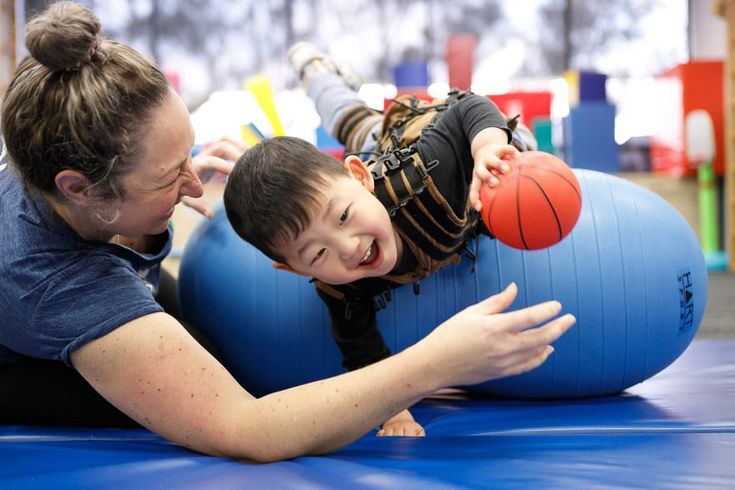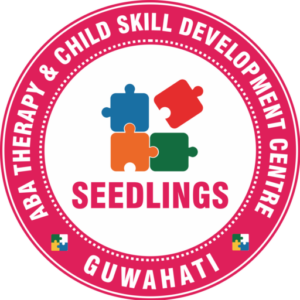
Sensory processing issues, often seen in children with autism, ADHD, or other developmental disorders, can affect how a child reacts to stimuli such as sounds, textures, lights, and smells. These challenges may impact daily activities, from eating and dressing to playing with friends. Occupational therapy (OT) is a key intervention to help children manage sensory processing issues, fostering improved functioning and well-being.
In this article, we will explore how occupational therapy for sensory processing issues works and how it benefits children.
What Are Sensory Processing Issues?
Sensory processing is how our brain interprets and responds to sensory information from the environment. Children with sensory processing issues may have difficulty filtering out or responding appropriately to sensory stimuli. This can lead to an overreaction (hypersensitivity) or underreaction (hyposensitivity) to sensory input.
Signs of Sensory Processing Issues in Children:
- Hypersensitivity: Extreme discomfort with certain textures, sounds, or lights. For example, a child may be distressed by the feeling of clothing tags or by bright fluorescent lights.
- Hyposensitivity: Lack of awareness of sensory input, such as not feeling pain or not noticing certain textures or smells.
- Difficulty with motor coordination: Trouble with tasks like tying shoes, writing, or playing sports due to sensory issues impacting motor planning.
- Difficulty focusing or transitioning between activities: Sensory overload can make it hard for children to focus or switch between tasks.
How Does Occupational Therapy Help?
Occupational therapy is designed to help children develop the skills they need to perform everyday tasks independently, and it plays a crucial role in addressing sensory processing issues. The goal of OT is not just to teach coping mechanisms but to enhance a child’s ability to interact and engage with the world around them.
1. Sensory Integration Therapy
One of the primary techniques used in OT for sensory processing issues is sensory integration therapy (SIT). This approach helps children process and respond to sensory information more effectively. Through structured, playful activities, children are exposed to different sensory experiences that gradually help them learn how to manage sensory stimuli.
Examples of Sensory Integration Activities:
- Swinging: Helps children with vestibular (balance) and proprioceptive (body awareness) input.
- Textured Play: Using materials like sand, rice, or fabric to help children get comfortable with different textures.
- Listening to Music: Exposure to calming sounds or rhythmic music helps children regulate their auditory sensory responses.
2. Creating a Sensory Diet
A sensory diet is a personalized set of activities designed to meet a child’s sensory needs. Occupational therapists help parents and caregivers create a “sensory diet” that involves regular activities tailored to either calm or stimulate the child’s sensory system.
Examples of Sensory Diet Activities:
- For Hypersensitivity: Soft brushes, deep pressure activities, or using noise-canceling headphones.
- For Hyposensitivity: Activities that provide intense input, such as jumping on a trampoline, swinging, or squeezing stress balls.
A sensory diet aims to provide regular sensory input throughout the day, helping the child better manage their sensory responses and prevent meltdowns or shutdowns.
3. Self-Regulation Techniques
Self-regulation is the ability to control one’s emotions, behaviors, and body movements when faced with sensory stimuli. Occupational therapists teach children strategies to help them stay calm, focused, and regulated when they experience sensory overload. These techniques often include:
- Breathing exercises: Deep breathing or guided relaxation helps the child calm down during overwhelming sensory experiences.
- Weighted blankets or vests: Providing deep pressure input can help calm a child’s nervous system.
- Fidget tools: Items like fidget spinners or stress balls can help children self-soothe when they feel overstimulated.
4. Modifying the Environment
Occupational therapists also work with parents and educators to modify the child’s environment to better suit their sensory needs. This can include simple changes at home, in the classroom, or at play areas.
Environmental Modifications May Include:
- Creating a quiet, sensory-friendly space for children to retreat when feeling overwhelmed.
- Using soft lighting, eliminating harsh fluorescent lights, or offering noise-canceling headphones.
- Introducing visual or auditory schedules to help children understand transitions and expectations.
5. Motor Coordination and Fine Motor Skills
Sensory processing issues often impact a child’s motor coordination, making tasks like handwriting, tying shoes, or participating in sports challenging. OT works on improving fine and gross motor skills through exercises and activities that integrate sensory experiences with motor tasks.
Examples of Motor Coordination Activities:
- Building with Blocks: Enhances hand-eye coordination and fine motor skills.
- Ball games: Helps children improve hand-eye coordination and body awareness.
- Crafts: Activities like cutting, gluing, and drawing build fine motor control.
Benefits of Occupational Therapy for Children with Sensory Processing Issues
The primary benefit of OT for sensory processing issues is the improvement in a child’s ability to navigate daily life with more confidence and independence. Here are some specific benefits:
- Improved Self-Regulation: Children learn how to manage sensory overload and stay calm in stressful situations.
- Enhanced Communication: Children with sensory processing issues often struggle to communicate their needs. OT helps improve both verbal and non-verbal communication.
- Better Focus and Attention: With a regulated sensory system, children can concentrate better, improving their performance in school and other activities.
- Social Skills: Through therapy, children learn to interact more appropriately with others, helping to improve their social interactions and relationships.
- Increased Independence: As children learn to manage sensory input, they can perform more activities on their own, improving their independence in daily routines.
When Should You Consider Occupational Therapy for Sensory Processing Issues?
If your child displays signs of sensory processing issues—such as difficulty with everyday activities, extreme reactions to sensory stimuli, or challenges with motor skills—it’s important to seek an occupational therapy assessment. Early intervention can greatly improve outcomes for children with sensory processing issues.
Contact Us for Occupational Therapy at Seedlings
At Seedlings – ABA Therapy & Child Skill Development Centre, our experienced occupational therapists work closely with children and families to develop personalized therapy plans. Whether your child struggles with sensory processing, motor coordination, or behavioral challenges, we are here to support their development and, ultimately, help them thrive.
👉 Curious how Seedlings – ABA Therapy & Child Development Centre can make a difference? Contact us for more information or to schedule an assessment at your convenience.
📍 Address: House No. 33, Rupalim Path, Rangamancha Path, Rukmini Gaon, Wireless, Guwahati, Assam – 781006. Google Map Location: Get Here
📞 Phone: +91 93959 19009 Or Book Online and we will get back to you.
Frequently Asked Questions (FAQs) About Occupational Therapy for Sensory Processing Issues
1. Can OT help with sensory seeking behaviors?
Yes! OT can help children with sensory seeking behaviors by providing appropriate outlets for sensory input, ensuring that the child receives the right amount of stimulation to stay regulated.
Improvement depends on the child’s individual needs, but many children experience significant progress within a few months of starting therapy
